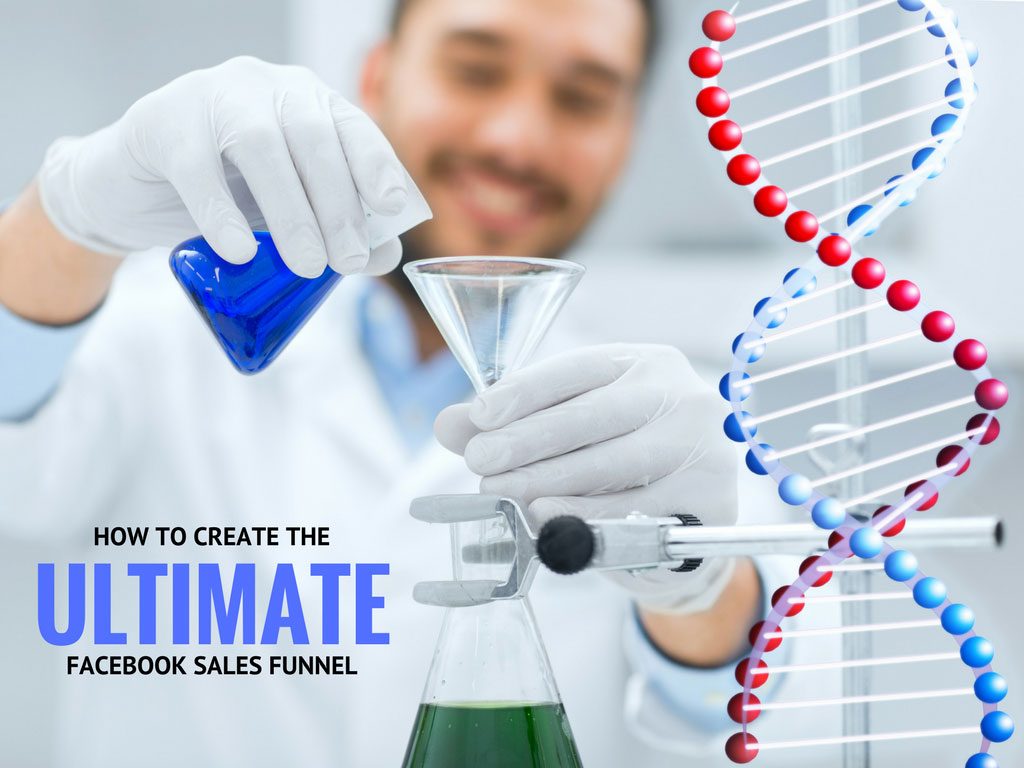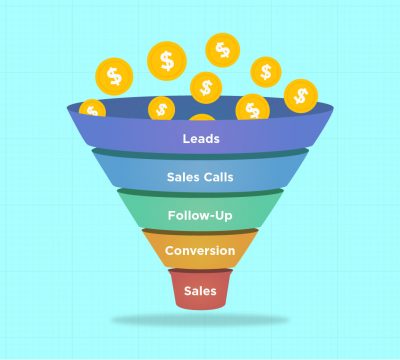How to Create the Ultimate Facebook Sales Funnel
Over the past few years, Facebook has seen a major shift in the way it serves up ads, with the platform becoming smarter, faster and more efficient at finding users who are likely to be interested in your brand, products and services. It’s no wonder that a recent study from the ecommerce platform ReadyCloud found that of the $370 billion dollars a year in global online sales, as much as 60% were driven directly by Facebook.
This dramatic shift in ad technology means that Facebook has gone from being all about awareness – much like traditional platforms such as TV, print or radio – to becoming a channel that’s incredibly effective at driving direct sales. It also means that in order to be successful on Facebook, it’s more important than ever to think about how to reach users at every stage of their purchase decision.

Enter the Facebook Sales Funnel, a simple yet effective technique you can use to connect with potential customers and drive more online revenue.
What is a Sales Funnel?
The concept of a sales funnel probably isn’t entirely new to you. In fact, the idea has been around for decades. The basic idea is to bucket users into key stages that reflect each step of their purchase journey.

When it comes to sales funnels, many advertisers focus their attention only on the bottom level. While Sales are the ultimate objective of any funnel, focusing only on the bottom means you’re missing out on the whole series of other steps customers took to convert. By thinking of Facebook in the context of a sales funnel, it can help you dramatically improve your conversions and gain valuable data on who your ideal customer truly is.
Let’s take a look at how to best serve customers at each stage of the journey.
Step 1: Advertise to the Bottom
It might seem counter intuitive, but one of the best places to start building your funnel is from the bottom up, by targeting users you know are most likely to buy. For Facebook that means advertising to past converters, page followers, email subscribers, customer lists, content engagers, app users and website visitors – all of which can easily be created as Custom Audiences within the Facebook platforms.
While targeting ads to these users is a great way to generate some early sales, what’s even more important is the data these audiences are going to generate after your campaign has run.
Step 2: Create New Top of Funnel Audiences
The next step is to look at the data you’ve gathered from Step 1 and find commonalities and patterns among your audiences – such as age, gender and device usage. You’ll then use this data to create new targeted audiences that will be added to the top of your funnel.
One way to do this is to create ‘Facebook Lookalike Audiences’ that share the commonalities of your converters. For example, you might create a Lookalike Audience based off your customer email list. Similarly, you can also create new ‘Saved Audiences’ based on demographic data. For example, if you’ve noticed that a lot of your converters are women between the ages of 25-34 who live in New York, you could create a new Saved Audience to target that particular demographic and geography. This also lightens the load when setting up new campaigns with proven audience segments.
Step 3: Drive from Awareness to Intent
Once you’ve built out your Targeted Audiences in Step 2, you’ll want to drive them further down the Facebook Sales Funnel from Awareness to Intent.
This requires serving up ads that provide real benefit and value to potential customers. Ads that go deeper than top level Brand Awareness and inspire the audience to take the next step. You could address this by offering a unique sale or promo to help entice users to take action. The idea is to help weed out users who aren’t interested and hone in on those potential customers who can be guided further down the funnel.
Step 4: Remarket to Interested Users
The next step is all about driving users from the Interest phase to the Evaluation and Decision phase at the end of the funnel. This means remarketing to users from Step 3 who visited a particular page or took a specific action on your website. These are users you know are interested in your products or services, but haven’t yet converted.
To maximize the effectiveness of this approach, your ads in Step 4 should be starkly different from those in Step 3, and ideally should provide additional details on why users will benefit from your products or services. One effective technique at this stage is to drive users to a specific landing page that not only provides more information, but also buckets those users for future Facebook remarketing ads.
Step 5: Build Trust & Close the Deal
This final stage is all about driving users to the purchase phase of your funnel. This requires creating yet an additional retargeting audience of users. At this point, these are users who have seen and clicked on two different ads, yet are still hesitant to convert. They’re clearly interested, but something is holding them back. This step is all about helping users overcome that hesitation and taking the final steps towards making a purchase.
One great approach is to build trust with your audience through testimonials and reviews by existing customers. At this stage you may also want to add further incentive, such as a discount or special offer, to help close the deal. Ultimately, this stage is all about ensuring there are as few barriers as possible to prevent customers from taking the final step towards converting.
Key Takeaways
With Facebook now being one of the most popular ecommerce platforms in the world, advertisers are quickly realizing its potential for direct sales. While creating an effective Facebook Funnel can be a challenging process, if done properly, it’s a powerful way to generate a real return on your hard-earned advertising dollars.
Have a question about creating a Facebook funnel? Post your question in the comments below or contact us for more information on how Vovia can help your business.
